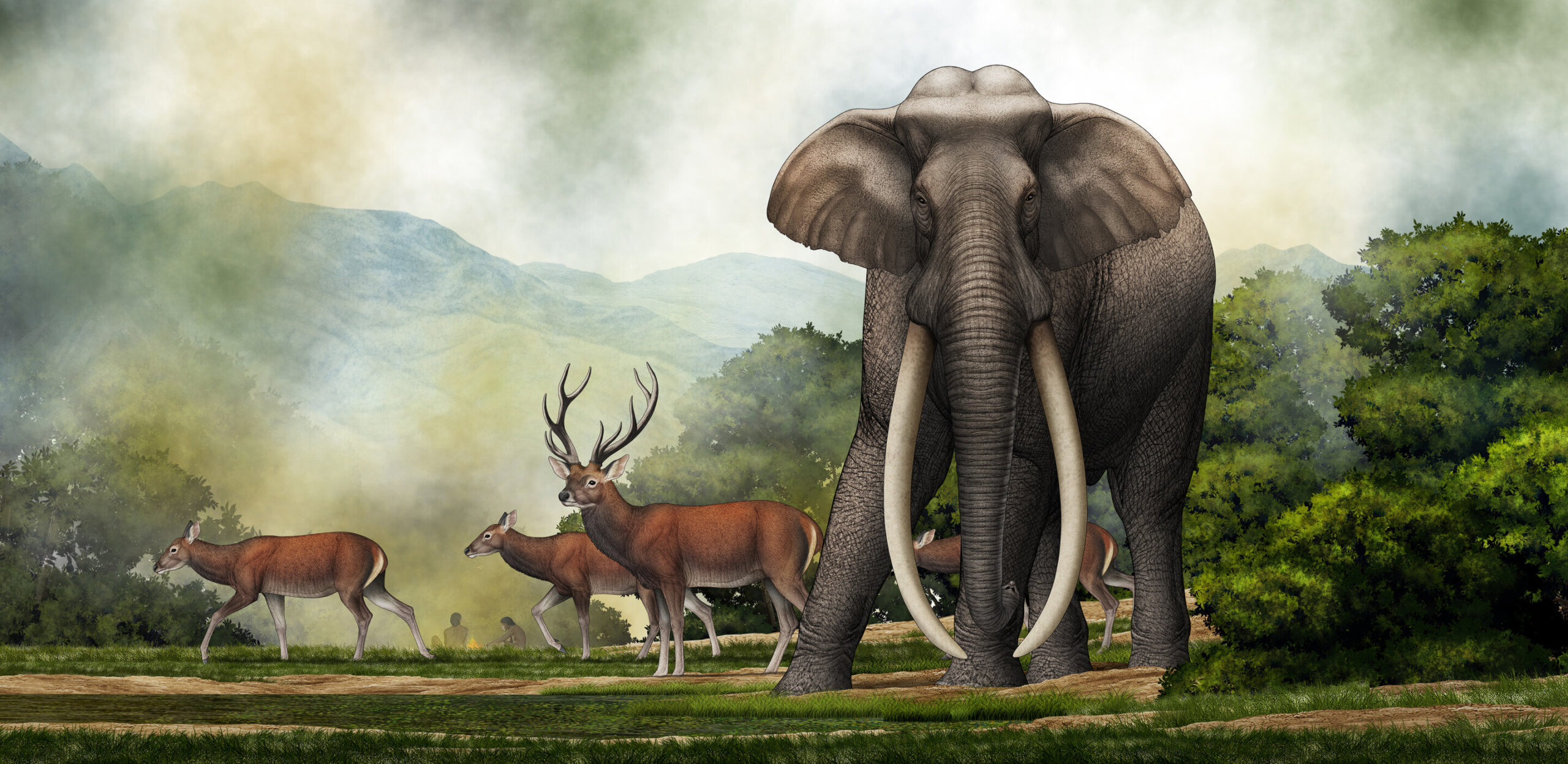During the late Middle Pleistocene, approximately 300,000 to 400,000 years ago, at least three ancient relatives of elephants perished near a river in the Kashmir Valley of South Asia. Not long after their demise, they became buried in sediment, preserved alongside 87 stone tools crafted by the ancestors of modern humans.
The remains of these elephants were initially uncovered in 2000 near the town of Pampore, but their identity, cause of death, and potential human interaction remained a mystery until recently. A research team, including Advait Jukar, a curator of vertebrate paleontology at the Florida Museum of Natural History, has published two papers detailing their findings from the Pampore site. One study reveals the discovery of elephant bone flakes, indicating that early humans struck the bones to extract marrow, a rich energy source. This evidence marks the earliest known instance of animal butchery in India.
The fossils themselves are significant as well. The second study describes the remains belonging to an extinct genus of elephants called Palaeoloxodon, whose members were more than twice the weight of today’s African elephants. Prior to this discovery, only one set of Palaeoloxodon bones had been found, and those were incomplete; the fossils from Pampore are by far the most well-preserved.
On the Indian subcontinent, only one fossil hominin—the Narmada human—has ever been discovered. This specimen exhibits a mix of features from both ancient and more modern hominins, suggesting that the region played a crucial role in early human migration. Before the Narmada find in 1982, researchers only had stone tools to hint at early human presence in India.
Jukar posed the intriguing questions: “Who are these hominins? What are they doing in this landscape, and are they pursuing large game?” The findings confirm that, at least in the Kashmir Valley, these early humans were indeed consuming elephants.
The stone tools found at Pampore were crafted from basalt, a material not native to the area. Paleontologists believe the raw materials were transported from elsewhere before being shaped at the site, dating the tools and site back 300,000 to 400,000 years. Prior to this discovery, the earliest evidence of butchery in India was thought to date back less than 10,000 years.
“People might not have looked closely enough or may have sampled in the wrong locations,” Jukar speculated. “Until now, there was no direct evidence of humans consuming large animals in India.”
Most of the elephant remains at Pampore came from a single mature male Palaeoloxodon. The inside of its skull exhibited abnormal bone growth likely caused by a chronic sinus infection. While it was evident that early humans exploited the carcass, no direct evidence of hunting, such as spear points embedded in the bones, was found. It’s possible that the hominins either hunted the elephant or scavenged it after its natural death, perhaps exacerbated by its health issues, which might have led it to become stuck in the soft sediments near the Jhelum River.
The skull of the Palaeoloxodon from Pampore is the most complete specimen of its genus found on the Indian subcontinent. Researchers identified it as belonging to Palaeoloxodon turkmenicus, a species previously only known from a partial skull fragment found in Turkmenistan in 1955. Unlike other members of the genus, the distinguishing features of P. turkmenicus remained unclear until now due to the challenge of differentiating species based solely on teeth.
Fortunately, the Pampore specimen retained its hyoids—fragile bones located at the back of the throat that attach to the tongue. These bones are distinctive between species, providing a crucial tool for classification.
Palaeoloxodon originated in Africa around a million years ago and later dispersed into Eurasia. Many species within this genus are characterized by their unusually large foreheads, which differ from any living elephant species, featuring a crest that bulges out over their nostrils. Earlier African species of Palaeoloxodon, however, lack this crest, while P. turkmenicus presents an intermediate form with an expanded forehead but no crest.
“This illustrates a transitional phase in the evolution of Palaeoloxodon,” Jukar explained. “This specimen could help paleontologists piece together the story of how this genus migrated and evolved.”
Considering that hominins have been consuming meat for millions of years, Jukar believes there is likely much more evidence of butchery yet to be discovered.
“What I’ve learned over the years is that it requires considerable effort to locate these sites, and it’s essential to survey and collect thoroughly,” he noted. “In the past, collectors often focused only on the more impressive fossils, neglecting shattered bones that could indicate human activity like butchery.”
The studies on stone tools and elephant butchery were published in Quaternary Science Reviews, while the taxonomy study appeared in the Journal of Vertebrate Paleontology.
